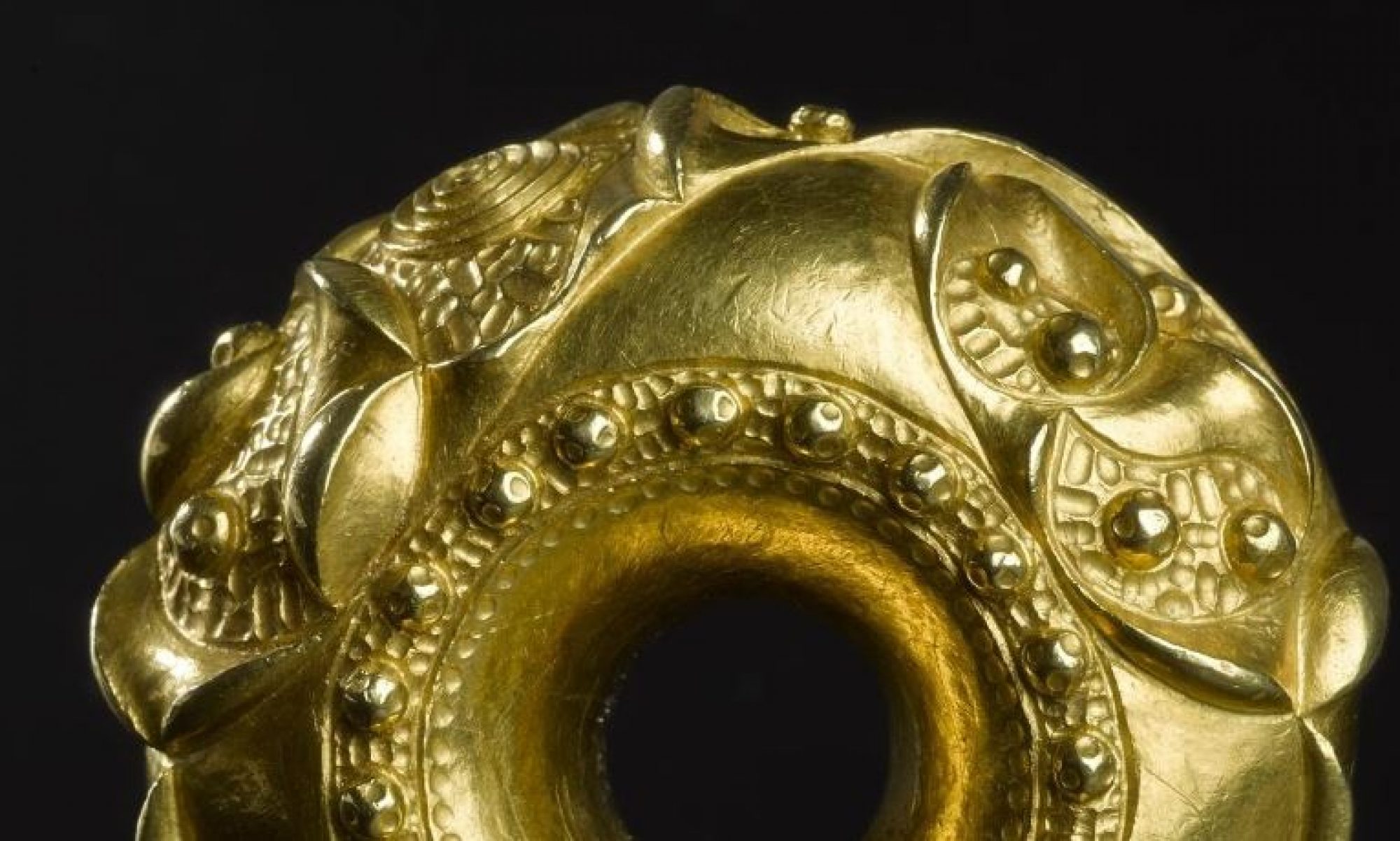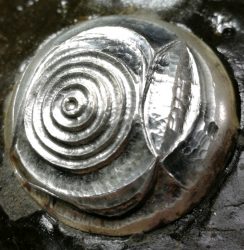Well, here we are again, folks. I’ll add a few updates from the previous two blogs first. As regards pronouncing ‘Alrewas’: Several Staffordshire people have put forward a variety of pronunciations, so I’m still not much the wiser (although fascinated by all the different ways!). Some suggest you pronounce it as it’s written, a few thought you dropped the ‘l’ and there was also a suggestion of ‘Oll-r’woss’. So yes, one of those times that, if I’m ever there, I’ll need to smile sweetly, ask… and hope for understanding!
I’ve also received a few interesting thoughts from people about why the torcs were deposited where they were: folks have suggested that there could be a continued ritual/sacred landscape around the Catholme Neolithic complex and/or that the various roads and rivers in the vicinity might be relevant factors. Yes, I’d go with that, although I’m not sure how visible Catholme would have been at this later period, but folk memory of important sites can be lasting. To me the important stuff – and indeed perhaps why Catholme was placed where it was in the first place? – is the various intersections of major rivers and – later – roads, but I’ll be exploring that in future blogs. For now, let’s get back to the torcs, specifically Shenstone.
Shenstone
This torc is the only one of the torcs that is bronze, the rest being gold. And I say torc, but it’s actually half a torc, being part of the neck ring and one terminal. This isn’t unusual in torc finds, with the most obvious examples being from Snettisham, where hundreds of broken, and broken up, torcs were buried in at least 14 hoards. ‘Bits of torc’ are also the most usual types of detected torc find. A quick search of ‘Iron Age torc’ in the PAS database shows just how many pieces have been found across England and Wales.
Shenstone is one of those torc pieces, found by a detectorist in Shenstone on 18th August 2019, so a very recent addition to the torc corpus. This isn’t unusual: many of the important torc finds I have written about over the last 8 years have been very recent finds: the Newark and the South-west Norfolk torcs were found in 2005, Blair Drummond in 2009, the remaining piece of the Sedgeford torc in 2004 and the Leekfrith torcs in 2016. Each of these torc finds adds to our understanding of Iron Age torcs with some, such as the Leekfrith torcs, significantly changing our thoughts about these artefacts, their dates and uses.
Sadly, there is only one record and series of photographs for Shenstone, and these can be found in the PAS database under reference WMID-62A518. The torc, being bronze, did not qualify as Treasure and so was returned to the finder and it’s current whereabouts are unknown. As such, I probably won’t be able to examine it, which will always mean our research will be lacking. Although it is sometimes possible to track down the finder (we were lucky in the case of the Near Stowmarket torc), this is not always possible and, even when it is, involves a lengthy process of emails and calls to try and track them down, with a lot of finger-crossing and hoping that the finder will allow you access. For most research it just adds too much to an already busy schedule.
As such, all we’ve really got to go on with Shenstone is the PAS photographs which, thankfully in this case, are numerous and detailed.







This torc is of a type known, for obvious reasons, as a ‘thistle headed torc’. There are several examples from the UK: in gold from Caistor in Lincolnshire and Leekfrith in Staffordshire, in bronze from Castleton in Dorset and Medway in Kent. These torcs are also relatively common on the continent with bronze examples, for example, from Diarville and Charvais in France and gold from Loiret in France and Heerlen in the Netherlands.
The form is generally thought to be early (c.400-250BC) and imported. Although I’d agree with the date (for example, these torcs aren’t found in the later Iron Age hoards from Snettisham), I remain unconvinced that the UK found examples are necessarily imported: Iron Age goldsmiths on these islands would have been more than up to the challenge, and their finding with very unusual, apparently insular, torc types in hoards such as Leekfrith suggest to me that the question of origin for ‘thistle head’ torcs is still very much open!
But back to Shenstone: it would appear to be an early, cast bronze and ?intentionally broken example.
Initial thoughts:
- Hmmmmmm, not a lot to be said really. Although we’ve got the rough findspot area, we haven’t got a precise findspot, although it is close to Watling Street and the River Tame.
- As it’s not going to be possible to examine this torc, there’s nothing to come from that.
- I’d really rather it wasn’t bronze to be honest. Gold would have made much more sense, but then again, as an early and possibly imported torc that, when new, would have looked gold’ish maybe there was an increased value to it at the time that we don’t readily recognise nowadays?
So yes, that’s Shenstone for you. Next time I’ll be looking at the Glascote torc: a beautiful torc that caused such a fuss when it was found that they even named a road and a school after it! Now, that’s what I call dedication to the torc cause!
And remember, if you want to keep up to date with all the Staffordshire Torc Odyssey posts, then click ‘Subscribe’ at the bottom of this page. Until next time: keep torcing!



5 Replies to “The Staffordshire Torc Odyssey: 3 Shenstone”